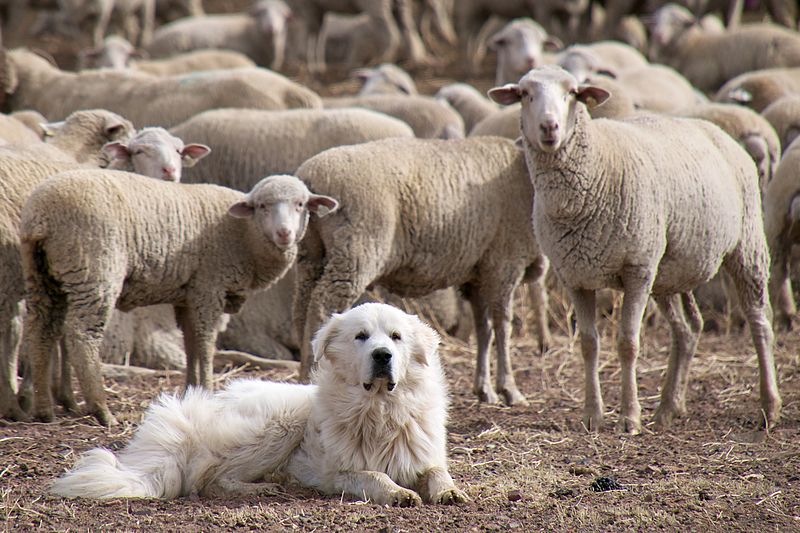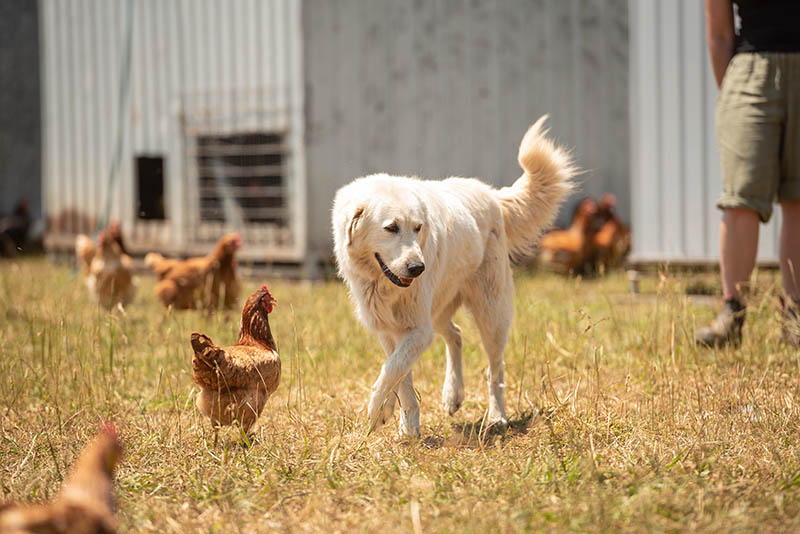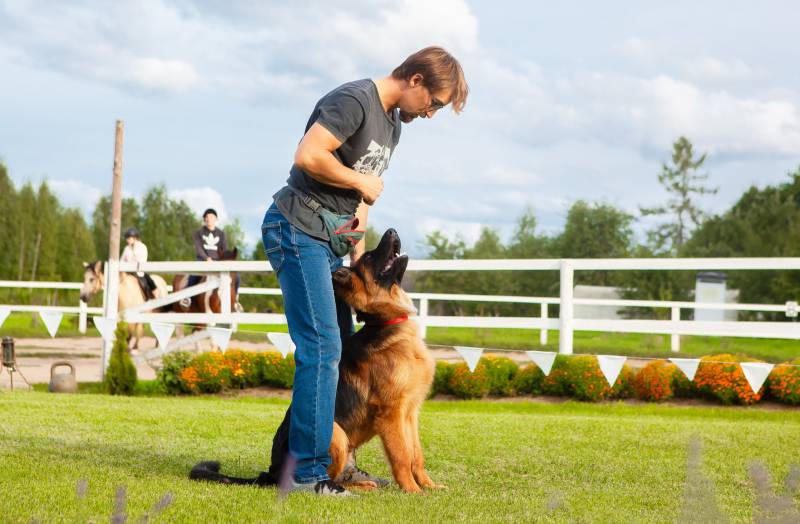
If you’re planning to train your dog to herd but are a complete beginner, it can be hard to know where to begin. The most important thing is to start slowly, work on the basics, and build your dog’s confidence when they’re just getting started.
This guide shares some tips on ensuring your pooch is a happy, confident, and capable herder.

Before You Start
What you’ll need:
- Treats
- A long leash (20–30 feet)
- A shorter leash
- A ball (optional)
- A whistle (optional)
- Small livestock or well dog-broke stock to start with


How to Train a Dog to Herd
1. Start with Basic Commands
Before you get into herding training, it’s essential that your dog knows how to respond to some basic commands, like “sit”, “stay”, “come”, “lay down”, and “leave it”. These commands give you more control over situations and help keep both your dog and your livestock safe. When you start herding training, you’ll be able to focus more on commands like “come bye”, “away”, and “walk up.”
2. Start with Small Animals
The initial stages of herding training are all about increasing your dog’s confidence. If you start out with large animals, animals that can run faster than the dog, or animals that won’t pay attention to the dog, this could lead to your dog feeling discouraged very quickly.
It’s ideal to start with smaller animals like chickens or ducks, or livestock that are already well dog-broke (animals that have experience being herded and will move toward you when they see a dog, even an inexperienced one). Later on, you can build up to larger or less cooperative animals.

3. Let Your Dog Get Used to the Animals
So, you’ve got your herd of small animals and are ready to roll with training. A good way to start is to put your chickens or ducks in a training pen (ideally the most relaxed chickens at first) and let your dog sit outside the pen to get used to their presence. Reward your dog when he’s calm around the animals. If you’re going to start with larger animals instead, read on to find out how to approach this.
4. Teach Herding Commands
When your dog is accustomed to being around chickens or ducks, keep your dog on a leash and walk them towards the animals while saying the words “walk up.” Stop about 2 feet away and reward your dog for staying calm.
Your dog should be able to walk up to the animals calmly, and you can later add in commands like “lay down” as you go toward the animals to practice getting your dog to stop at any time you tell them to.
Progress to moving around the animals in circles, saying “come bye” to go in a clockwise direction and “away” to go in an anti-clockwise direction. Continue to reward your dog with a treat when they start to get it. You can remove the leash when your dog is relaxed around the birds and keep practicing the above commands.

5. Working with Larger Animals
If you’re starting with larger animals or have been practicing with smaller ones and are ready to move on, start with a small herd to avoid intimidating the dog. Put your dog on a long leash and walk up to the herd while saying “walk up.” As with the smaller animals, give your dog time to feel relaxed around the herd, rewarding them every time they are calm.
Then, place your dog on a short leash and practice walking around the herd anti-clockwise (“away”) and clockwise (“come bye”), saying the appropriate commands as you go and rewarding your dog for their successes.
When your dog has things down packed with the short leash, switch to the long leash and move backward by around 20 feet. Continue practicing the commands at this distance until your dog is able to herd. When your dog is at the point, you can remove the leash and practice without it.

Additional Tips
- Give your dog time to rest between sessions and keep training sessions short to prevent your dog from getting bored or exhausted.
- Avoid shouting at your dog for mistakes—this will diminish their confidence.
- Teach commands like “break” or “to me” to get your dog to stop herding and come back to you when you need them to, and “wait” to get your dog to wait until you tell them to start herding. You can practice this with a ball at first.
- Teach a “get back” or “get out” command to use if the dog is getting too close to the livestock and stressing them out. The goal is to get the dog to move backward to give the animals more room.
- Consider whistle-training your dog by using different numbers of blows for different commands. For example, one blow for “come bye”, and two blows for “away”. You can do this by first using verbal commands in conjunction with the whistle blows.
- Be patient with your dog—it may take some dogs longer than others to develop confidence and get a nice natural rhythm going.

Conclusion
Though the prospect of training a dog to herd can be intimidating, you can make it work with lots of practice and by boosting your dog’s confidence at every opportunity.
It’s also important to remember that you and your dog are a team. Getting used to reading each other’s body language and predicting what the other’s next move will be is a skill that you will develop with time and start to do naturally together.
Featured Image Credit: marketalangova, Shutterstock



